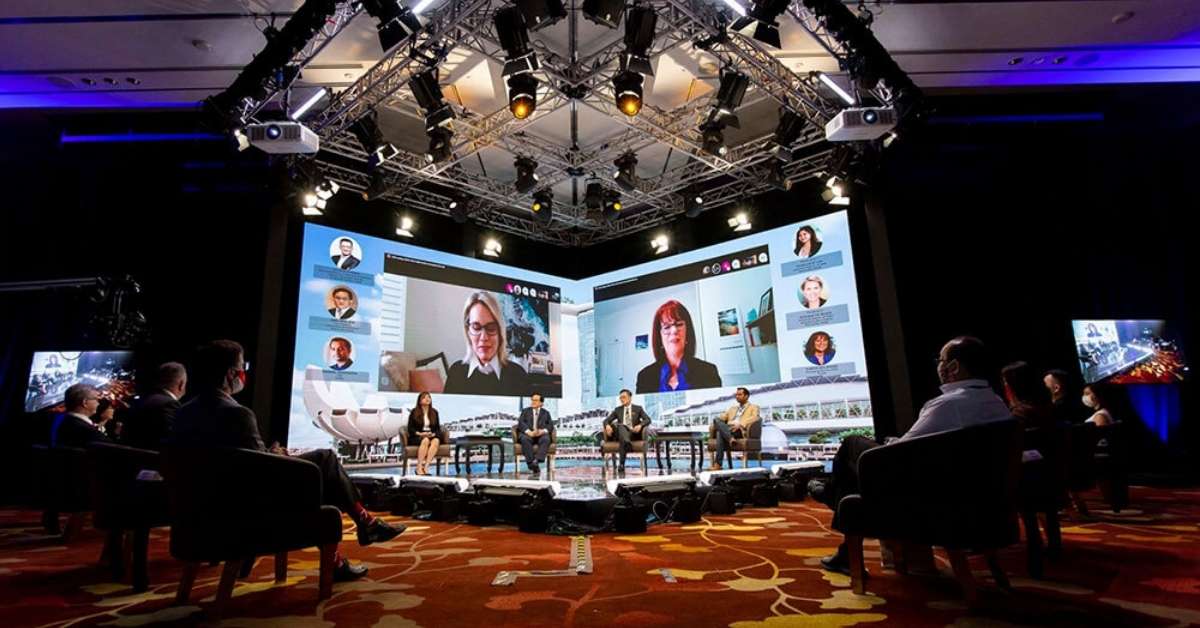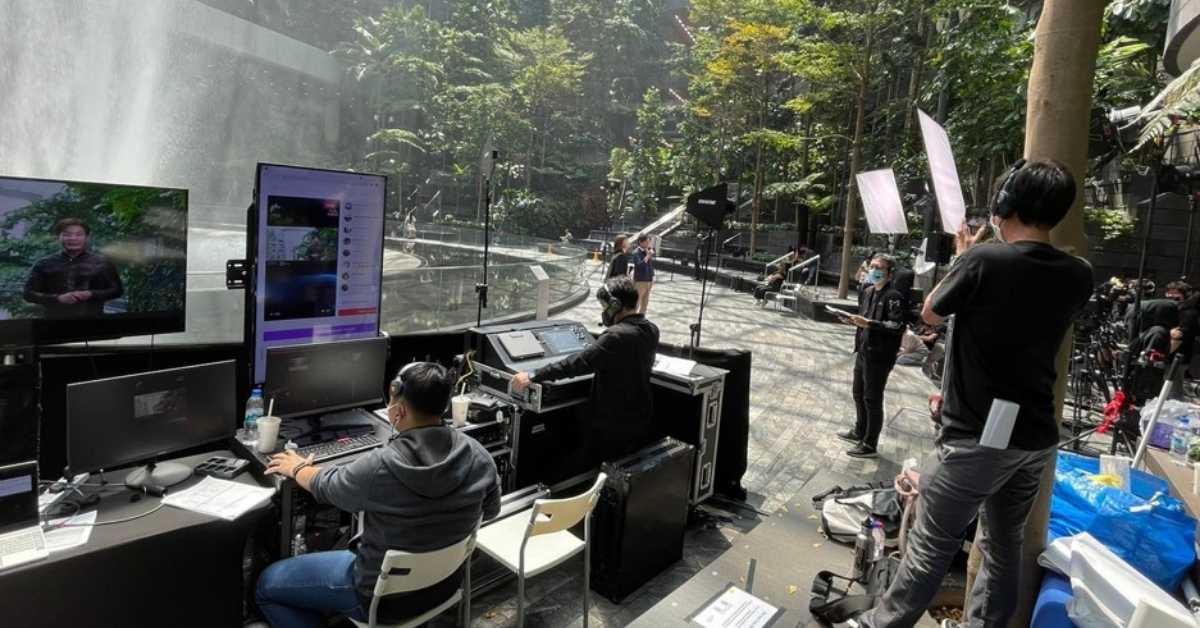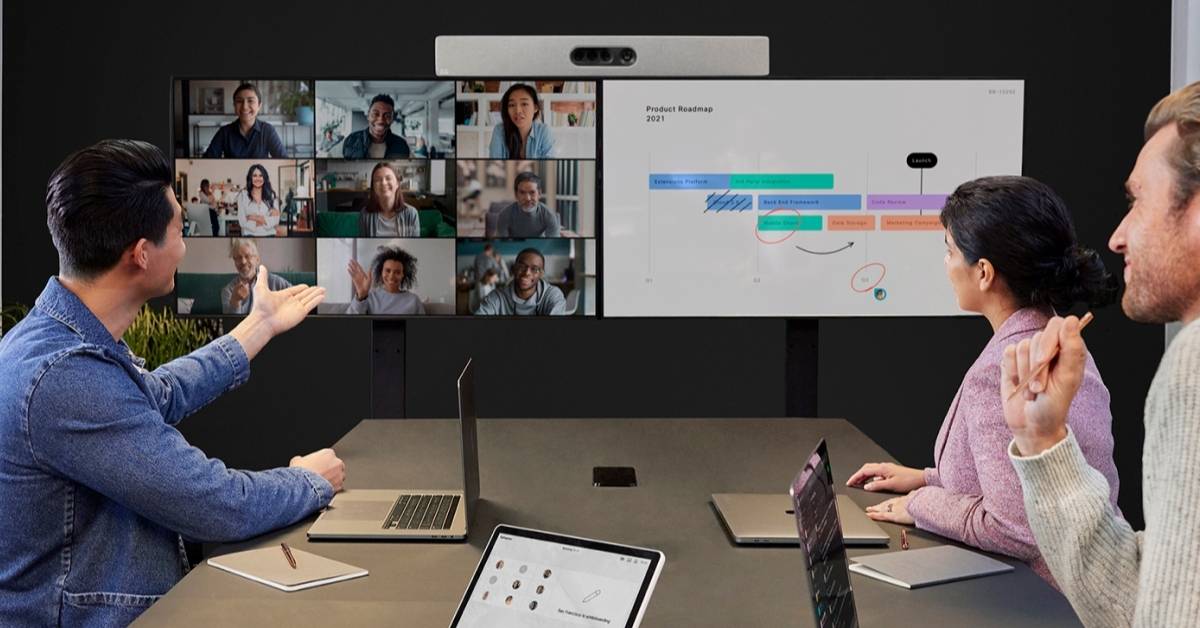
Hong Kong

Vietnam

Philippines

Singapore

Thailand

Japan

UAE

Egypt

China

South korea

Malaysia



Planning a hybrid event can feel overwhelming—but it doesn’t have to be. In this guide, you’ll learn how to manage hybrid events effectively, from setting clear goals to using the right tech tools. Whether you’re new to hybrid formats or looking to improve, keep reading for practical tips, tools, and insights to ensure your next event is a success.
To understand how to manage hybrid events, it’s important to first know what they are. Hybrid events combine both in-person and virtual experiences, allowing attendees to participate either on-site or online. They bridge the gap between physical and digital spaces, making events more flexible, accessible, and scalable for diverse audiences across different locations.

Key characteristics of hybrid events include a mix of live and virtual components, real-time interaction, and tailored experiences for both audiences. This format ensures that virtual attendees feel just as involved as those attending in person, through features like live Q&A sessions, interactive polls, and breakout rooms.
One of the biggest benefits of hybrid events is their ability to reach a wider audience. They remove geographical and physical barriers, making it easier for people to attend from anywhere. Hybrid formats also offer greater flexibility, improved data tracking, and the opportunity to repurpose content after the event—making them a smart, future-ready choice for many organisations.
Successfully planning a hybrid event requires careful coordination between in-person logistics and virtual experiences. To help you navigate this process, we’ve broken down exactly how to manage hybrid events step by step.
This guide will walk you through everything you need to create a smooth, impactful hybrid event from start to finish.
Start by clarifying the purpose of your hybrid event—whether it’s to educate, launch a product, or foster networking. Then, identify and segment your audience into in-person and virtual groups.

This helps tailor content and engagement strategies, ensuring each group receives a relevant, valuable experience that aligns with your overall event objectives.
Select a hybrid format that suits your goals and audience. Consider whether the event will be live-streamed, on-demand, or a mix of both. Then, choose reliable platforms that support virtual participation, interaction, and analytics. Your tech stack should be intuitive for attendees while offering features like chat, polls, and breakout rooms for an engaging virtual experience.
Design a seamless timeline that works for both in-person and online audiences. Keep sessions concise to maintain engagement, and schedule breaks or transitions with virtual attendees in mind. Consider using a detailed run sheet that maps out the content flow, speaker transitions, and timing to ensure everyone is aligned and the experience feels cohesive.
Ensure the venue is equipped with strong internet connectivity, professional AV support, and space for cameras and live streaming. Coordinate closely with your tech team to align physical and digital requirements.

The success of a hybrid event depends heavily on smooth integration between in-person logistics and virtual delivery, so plan for both from the start.
Design engagement strategies that work across both channels. Use live polls, Q&A sessions, gamification, and social media to create a sense of community. Encourage in-person attendees to interact with virtual participants through apps or chatrooms. Keeping both audiences involved ensures no one feels like an afterthought—and drives better overall participation.
Hybrid events require a team that understands both live and virtual dynamics. Assign dedicated roles such as a virtual host, tech support lead, moderator, and on-site coordinator.

Clear responsibilities help the event run smoothly and ensure issues are quickly addressed, whether they arise in the physical venue or on the digital platform.
Conduct multiple rehearsals to test cameras, microphones, streaming software, and presentation materials. Practice transitions, cue points, and speaker handoffs with the entire team. This helps identify potential issues before the live event and gives everyone confidence in handling the hybrid format smoothly on event day.
Have a dedicated support team actively monitoring the event across all channels. Be ready to resolve tech glitches, assist attendees, and adapt quickly to unexpected changes.

Real-time support ensures a smooth experience for everyone and minimizes disruptions that could negatively impact the event’s success or attendee satisfaction.
Track performance using both quantitative and qualitative data. Monitor attendance, engagement levels, session popularity, and platform analytics. Post-event surveys can provide deeper insights into attendee satisfaction. Use this information to evaluate what worked, what didn’t, and how future hybrid events can be improved.
After the event, follow up with attendees through thank-you emails, surveys, and access to session recordings. Repurpose content into bite-sized videos, blog posts, or social media highlights to extend your event’s impact. This not only keeps your audience engaged but also adds long-term value to your content investment.

Mastering how to manage hybrid events takes thoughtful planning, the right tools, and a team that understands both in-person and virtual dynamics. By following these step-by-step strategies, you’ll be equipped to deliver a seamless, engaging experience for all attendees—no matter where they are.
An essential part of learning how to manage hybrid events is choosing the right tools and technology. In this section, we’ll explore key tools that can help you plan, execute, and evaluate your hybrid events more effectively.
These platforms help you manage registration, scheduling, communications, and more—all in one place:
These tools ensure high-quality streaming and reliable audio-visual support for your event:
Use these tools to boost interaction and participation across both physical and virtual audiences:
Track attendee behavior, engagement, and event performance with these analytics tools:
Choosing the right tools is a crucial part of understanding how to manage hybrid events effectively. With the right platforms and tools, you can deliver a seamless experience for both in-person and virtual attendees.
As you explore how to manage hybrid events effectively, keep these best practices in mind to ensure an engaging experience for both in-person and virtual attendees:

Even with careful planning, there are a few pitfalls that can impact your event’s success. As you learn how to manage hybrid events more effectively, be sure to steer clear of these common mistakes:

If you’re looking for expert guidance on how to manage hybrid events seamlessly, Dream Station is here to help. With years of experience in crafting impactful, tech-enabled experiences, we offer end-to-end hybrid event management services tailored to your goals and audience needs.
From conceptualisation to execution, our team ensures every detail is covered—whether it’s selecting the right virtual platform, managing venue logistics, or designing engagement strategies for both in-person and remote attendees. We handle the tech, coordination, and creative direction so you can focus on delivering a memorable experience.

With Dream Station as your event partner, you’ll gain the confidence, tools, and support needed to run successful hybrid events that connect and inspire audiences wherever they are. Learn more about our hybrid event management service to have an event with ease and excellence.

OUR GLOBAL PRESENCE
